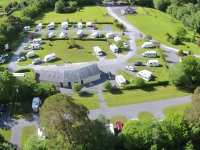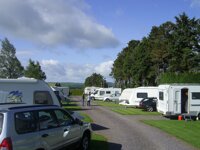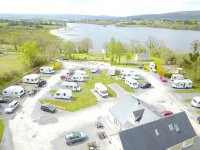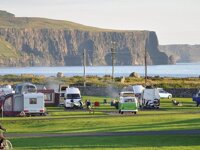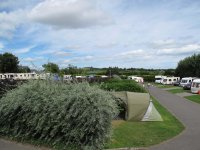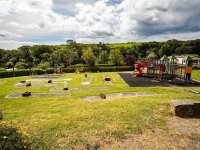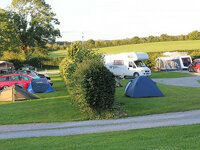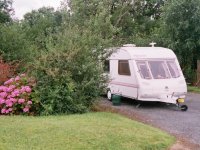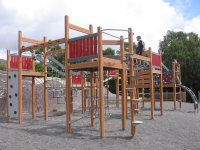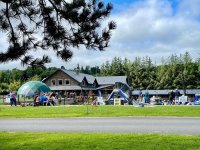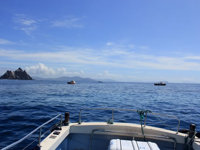Camping in Ireland
75 campsites in Ireland
Campsite Listing Google Map
The following consent is required:
Tracking & performance, Targeting & advertising.
Ireland
Famed for its folklore, traditional music, and friendly, hospitable people, the Republic of Ireland offers spectacular scenery contained within a relatively compact area. With plenty of beautiful areas to discover, and a relaxed pace of life, it is an ideal place to unwind.
Thanks to the extended opening dates of many campsites, camping in Ireland is a year-round activity. Ireland is the perfect place to indulge in a variety of outdoor pursuits while taking in the glorious scenery. There are plenty of way-marked footpaths, which lead through woodlands, across cliffs, past historical monuments and over rolling hills. The dramatic coastline, with its headlands, secluded coves and sandy beaches, is fantastic for watersports: from sailing to windsurfing, scuba diving and swimming; or for just simply relaxing and watching the variety of seabirds that nest on the shores.
The Cliffs of Moher, in particular, is a prime location for birdwatching and Goat Island, just offshore, is where puffins make their nesting burrows. Fishing is also popular; the country is full of streams, rivers, hidden lakes and canals, which can all be explored by hiring a boat. In the south, the beautiful Ring of Kerry is one of the most visited regions. This 110-mile route encircles the Inveragh Peninsula, and is surrounded by mountains and lakes.
Other sights include the Aran Islands, home to some of the most ancient Christian and pre-Christian remains in Ireland, and the Rock of Cashel, with its spectacular group of medieval buildings; not to mention the bustling cities of Dublin, Galway and Cork.
Walking and cycling through this scenic country is a joy in all seasons, and wild swimmers will love a bracing dip in Lough Tay in the Wicklow Mountains, whatever the time of year. The Ring of Kerry is one of Ireland’s most beautiful and popular routes, leading visitors through 179km of lush green countryside and taking in spectacular views.
For culture lovers, camping in Ireland offers an opportunity to get immersed in the energy of its cities. Discover why poets and writers fell in love with Dublin, now a UNESCO World City of Literature, wander the streets of Galway and soak up its atmosphere, or join in some festival fun in Limerick. There’s always something to celebrate in Ireland’s friendly towns.
Ireland is made up of four provinces: Connaught, Leinster, Munster and Ulster. Comprising 32 counties, 26 of which fall into the Republic of Ireland.
Unknown matrix block type: tableOfContents2!

Basic Information
Capital Dublin
Currency Euro (EUR)
Language(s) English / Gaelic
Time Zones GMT (UTC+0)
Summer IST (UTC+01)
Telephone Code +353
Units Metric
EU Member Yes
Schengen Area Yes
Tourism Website www.ireland.com
Ireland is a member of the European Union, and customs inspections are occasionally conducted on individuals and vehicles crossing the border to ensure compliance with Ireland's regulations. Read more about the border with Northern Ireland on the UK Government Website.
Places of interest

Connaught: Boyle Abbey; Connemara National Park; Céide Fields at Ballycastle; Kylemore Abbey; Aran Islands; Galway city; Westport; Sligo Abbey; megalithic tombs of Carrowmore.
Leinster: Wicklow Mountains National Park; Rock of Cashel; Killkenny Castle; Guinness brewery, Trinity College and National Museum in Dublin; Dunmore Cave at Ballyfoyle; Wexford Wildfowl Reserve.
Munster: harbour towns of Kinsale and Clonakilty; Blarney Castle in Cork; historical city of Limerick with 13th-century castle fortress and old town; Ring of Kerry; Bunratty Castle; Cliffs of Moher; Killarney National Park.
Ulster: Glenveagh National Park; Slieve League, the highest sea cliffs in Europe; Donegal Castle; Newmills Corn and Flax Mills in Letterkenny.
Did you know?
- The Blarney Stone, reputedly cast with a spell by a witch to reward a king who saved her from drowning, is said to bestow the gift of eloquence on all those who kiss it.
- The harp is a symbol of the Irish people’s love of music: since Medieval times it has been the official emblem for Ireland.
- Hurling is the oldest native sport.
- On display in Trinity College, the Book of Kells is one of the oldest books in the world, written around the year 800 AD.
Shopping in Ireland
Ireland is undoubtedly one of the most popular tourist destinations in Europe. Nicknamed the Emerald Isle for its open green countryside, a holiday here is a must! Ireland is a treasure trove of artisan, handmade, and local products. It has everything from independent boutiques to a creative scene and a well-established fashion and design sector, which has put it at the front and centre as one of Europe’s most dynamic destinations for shopping. Wander the streets and shops around the city centre of Dublin or drive half an hour from Dublin and explore the charming shops and boutiques in Kildare Village.
If you are after shopping in Dublins city centre, then George’s Street Arcade is a must-visit! This was Ireland’s first purpose-built shopping centre and one of Europe’s oldest. In this Victorian district, you can enjoy independent boutique shops and stalls ranging from vintage items, art, clothing, jewellery and collectable items. It also has excellent dining and food options. If you are visiting Dublin on a rainy day, then Ireland's biggest shopping centre, Dundrum Shopping Centre, is worth a visit. This centre has international chains, restaurants, bars and a cinema complex.

A few things are worth bringing back home with you when visiting Ireland. Some of the best are its traditional Celtic pottery, Claddagh Rings, tweeds and traditional woven blankets. Ireland is full of experts when it comes to ceramics. The range runs from traditional Celtic pieces for everyday use to one-of-a-kind, hand-crafted modern objects. The Claddagh Ring is a classic Irish ring representing love, loyalty, and friendship. Both men and women can wear it. The ring has three sections:
- The heart, which symbolises love.
- The crown, which symbolises loyalty.
- The clasped hands, representing friendship.
The Foxford Mill was first established in 1892 and used traditional techniques passed through generations to produce blankets of all kinds. Their lavish blankets stand the test of time, from sturdy wools to luxurious mohairs in more contemporary styles and traditional Irish tartans.
Money in Ireland
Ireland uses the euro as its official currency. ATMs are available in most towns and cities, and card acceptance is also common when visiting smaller towns and villages. However, it is advisable to carry some cash with you.
Public Holidays in Ireland
- New Year's Day: 1st January
- Saint Brigid's Day: 1st Monday in February
- Saint Patrick's Day: 17th March
- Easter Monday (Banks may close on Good Friday)
- May Day: 1st Monday in May
- June Holiday: 1st Monday in June
- August Holiday: 1st Monday in August
- October Holiday: Last Monday in October
- Christmas Day: 25th December
- Saint Stephens Day: 26th December
Please note Some dates are moveable, so please check before travelling.
Driving In Ireland

Visitors to Ireland who wish to drive in the country must comply with the following requirements:
- A valid driver's license: Visitors must have a valid driver's license from their home country.
- Car insurance: Visitors must have valid car insurance for their vehicle, covering both the driver and passengers.
- Road rules: In Ireland, motorists drive on the left and overtake on the right. Drivers must not attempt overtaking if it could cause inconvenience to others.
- The use of seat belts is mandatory for all occupants of a vehicle. Visitors must follow Ireland's traffic laws, including speed limits, traffic signals, and road signs. Cars entering a roundabout should prioritise those already on it unless otherwise indicated. Signs at uncontrolled junctions will highlight the presence of a main road.
- Safety equipment: A red warning triangle is compulsory in case of an accident or breakdown. It is recommended that visitors equip their vehicle with a fire extinguisher and a first-aid kit, a reflective jacket, and spare bulbs.
- Camper vans and cars with caravans are not allowed to exceed 18.75 metres in length, 4.65 metres in height and 2.55 metres in width.
- Minimum driving age: The minimum driving age is 17 years old.
- Alcohol law: The limit for alcohol in the bloodstream must not exceed 0.02 per cent; severe penalties include licence suspension.
Ireland Emergency Services
- Ireland's emergency number for life-threatening emergencies.
To access police, ambulance, fire brigade services and Maritime search & rescue: 112
Weather in Ireland
DUBLIN WEATHERThe island is hugged all year round by the warm influence of the Gulf Stream, making Ireland much warmer than other countries that share its latitude. The Gulf Stream also ensures that the Irish coastline remains ice-free throughout winter.
July is the hottest month in Dublin, with an average temperature of 15.5°C, and the coldest is January at 5°C, with the most daily sunshine hours at 6.5 - 7 hours in May. The wettest months are December and January, with an average of 80mm of rain. The best month to swim in the sea is August when the average sea temperature in the Irish Sea is 14.9°C.
The wind in Ireland is frequent and lively, although it is generally stronger between late autumn and early spring. The windiest area is in the west and north, and the least windy area is inland towards the east. Rainfall is frequent throughout the island, but especially along the west coast, where it rains on average more than once every two days.
